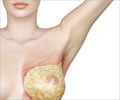Abemaciclib Medication Information
Discover comprehensive details about Abemaciclib, including its pronunciation, uses, dosage instructions, indications, and guidelines on how and when to take it or avoid it.
The updated prescription information covers potential side effects, precautions, warnings, and storage recommendations.
Additionally, explore the Abemaciclib brands available in India and internationally, along with pricing information. For personalized advice, consult your healthcare provider.
Generic Name : Abemaciclib Pronunciation : a-BEM-a-SYE-klib Therapeutic Classification : ChemotherapyBrand Names or Trade Names of Abemaciclib
India :
Verzenio
Why is Abemaciclib Prescribed? (Indications)
Abemaciclib is used alone or with other drugs such as fulvestrant or anastrozole for treating women with advanced breast cancer or breast cancer that has spread to other parts of the body and hormone receptor-positive breast cancer.When should Abemaciclib not be taken? (Contraindications)
Abemaciclib should not be used in patients with-• Allergy to abemaciclib
• Pregnancy and breastfeeding
What is the dosage of Abemaciclib?
Monotherapy:• The recommended dose of abemaciclib is 200 mg twice a day
Combination therapy:
• The recommended dose of abemaciclib in combination therapy is 150 mg twice daily.
• Fulvestrant can be used in a recommended dose of 500 mg on days 1, 15, and 29 followed by once a month thereafter.
The treatment with abemaciclib should be continued until the progression of the disease or any unacceptable toxicity and dose modifications are recommended while serious adverse reactions occur.
The dose can be reduced by 50 mg after the occurrence of each grade of adverse reactions and the treatment with abemaciclib should be discontinued if the patient cannot tolerate 50 mg dose given twice a day.
Patients with severe liver disease should receive the tablet once daily.
How should Abemaciclib be taken?
• Abemaciclib comes as a tablet which should be taken by mouth with or without food.• Take abemaciclib tablets around the same time every day and exactly as advised.
• Swallow abemaciclib tablets with sufficient quantity of water and do not break, chew or crush the tablet.
What are the warnings and precautions for Abemaciclib?
• Women of childbearing age should use effective contraceptive measures while on abemaciclib treatment and continue for at least three weeks after stopping the drug.• Patients are advised to drink plenty of liquids and can take anti-diarrheal medicines such as loperamide during abemaciclib treatment as abemaciclib may result in severe dehydration or volume depletion.
• Reduction in white blood cells are reported during abemaciclib treatment which may lead to the occurrence of infections and patients should be treated appropriately
• Monitor complete blood cell counts before starting abemaciclib therapy and for every two weeks initially for first two months, followed by monthly once for the next two months, and later as needed.
• Liver function should be monitored by doing the liver function tests regularly for every two weeks for the first two months followed by every month for the next two months, and later as needed.
• Patients taking abemaciclib should be watched for the signs and symptoms of thrombosis and pulmonary embolism and should be treated with appropriate medical care.
• Abemaciclib may lead to infertility in men. Therefore, if men are administered, they should be advised to store their sperms in a sperm bank before starting the treatment for future purpose.
What are the side effects of Abemaciclib?
Common: Nausea, vomiting, headache, low blood cell counts, stomach painGastrointestinal: Diarrhea, dry mouth, constipation, mouth ulcers, loss of appetite
Cardiovascular: Swelling of the arms or legs, blood clots in the vein
Blood: Decreased level of white blood cells, red blood cells, platelets
Nervous system: Dizziness
Respiratory: Upper respiratory infections, cough
Skin: Rashes, itching, loss of hair
Others: Joint pain, increased level of liver enzymes, weight loss, fever, fatigue or asthenia, high creatinine levels (which normally indicates a problem in the functioning of the kidneys)
What are the other precautions for Abemaciclib?
• Do not breastfeed while on abemaciclib therapy and for at least three weeks after the last dose of abemaciclib.• Women of childbearing age should be tested for pregnancy and treatment with abemaciclib should be started only if the test result is negative.
• If vomiting occurs after taking abemaciclib tablets, do not take another dose but continue with the next scheduled dose.
What are the Drug Interactions of Abemaciclib?
• Avoid using grapefruit juice with abemaciclib as serious interactions may occur resulting in unwanted side effects.• Anti-fungal drugs such as ketoconazole increase the concentration of abemaciclib when taken together and should be avoided. Drugs like itraconazole, clarithromycin, diltiazem and verapamil also increase the blood concentration of abemaciclib.
• Rifampin when taken along with abemaciclib resulting in a decreased concentration of abemaciclib resulting in low therapeutic activity.
• Abmaciclib may increase the blood level of metformin.
What are the storage conditions for Abemaciclib?
• Store at room temperature between 20°C to 25°C.• Protect from excess heat and moisture.
• Keep away from the reach of children.
 MEDINDIA
MEDINDIA
 Email
Email








